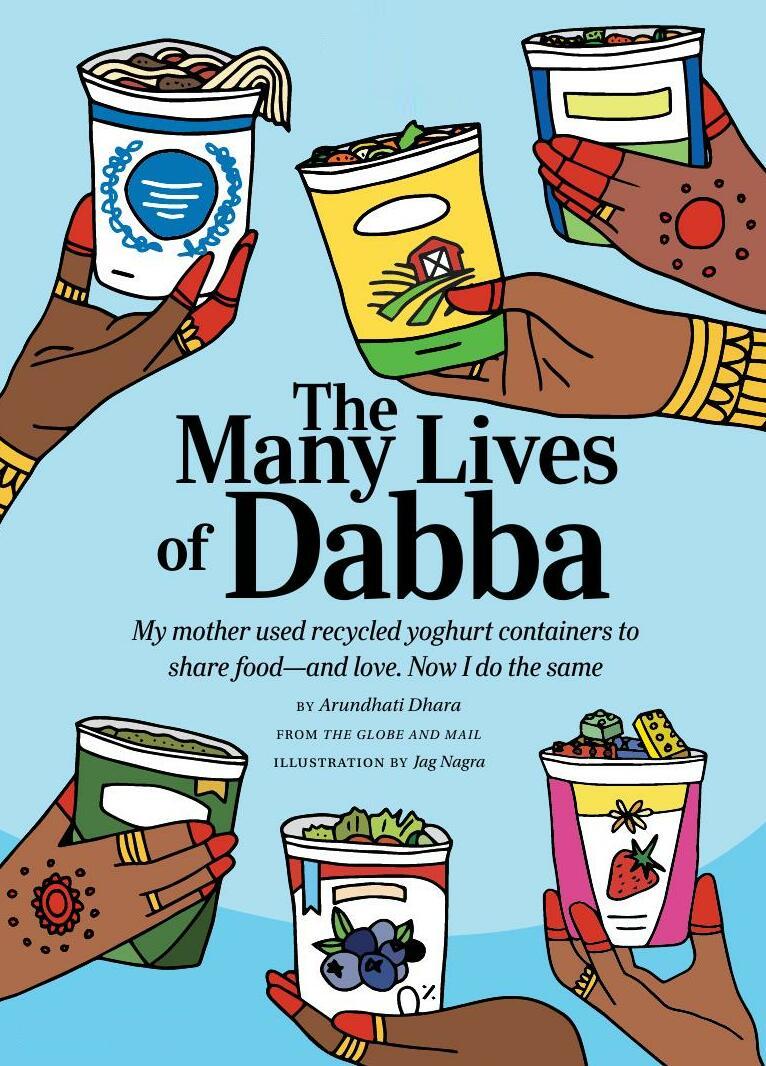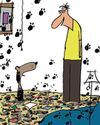The Many Lives of Dabba

EVERY AUNTIE I KNOW has a kitchen drawer containing a carefully maintained collection of yoghurt dabbas. Dabba is a pan-Indian word for ‘box,’ but it refers to all manner of containers, too. Like the Hindu concept of reincarnation, dabbas live many lives; the 750-millilitre containers that hold the yoghurt we buy at the supermarket and eat every day are saved and washed, and washed again.
The reused dabbas end up storing leftovers, religious offerings and potluck contributions. They pass from house to house, living in their drawer, the fridge or the pooja room (often it’s actually a closet) where the morning prayers are recited. Sometimes they are even returned to their original owners, full of some other delicious food. This is a fairly advanced manoeuvre and one only the elder aunties manage— recognizing their dabba from their friends’ seemingly identical container is nothing short of miraculous.
I grew up in a community of South Indian immigrants, and the manufacturer’s labelling on the dabbas was a source of information about the families they came from. Rich, fatty yoghurts might indicate a still-secret pregnancy, as women are routinely encouraged to eat everything (and I mean everything) when gestating. Low fat—or worse—non-fat yoghurt meant someone’s doctor had been talking about cholesterol. And sweetened, flavoured yoghurt? That was an abomination that didn’t bear mention.
Denne historien er fra November 2022-utgaven av Reader's Digest India.
Start din 7-dagers gratis prøveperiode på Magzter GOLD for å få tilgang til tusenvis av utvalgte premiumhistorier og 9500+ magasiner og aviser.
Allerede abonnent ? Logg på
Denne historien er fra November 2022-utgaven av Reader's Digest India.
Start din 7-dagers gratis prøveperiode på Magzter GOLD for å få tilgang til tusenvis av utvalgte premiumhistorier og 9500+ magasiner og aviser.
Allerede abonnent? Logg på

DELETE YOUR INTERNET FOOTPRINT
With spies lurking everywhere, how can you keep yourself safe? Try these 25 smart steps.

Have You Herd?
A World of GOOD REASONS TO SMILE

POINT TO PONDER
P. V. Sindhu, FORMER BADMINTON WORLD CHAMPION, IN HER SPEECH AT THE 16TH CONVOCATION CEREMONY AT FLAME UNIVERSITY

24,000 FEET AND FALLING
CAUGHT IN A VIOLENT STORM CLOUD, THE PARAGLIDER WAS PUSHED HIGH INTO THE ATMOSPHERE.

Speechless City by Gulammohammed Sheikh, (1975) 122 cm x 122 cm, Oil on Canvas
The painter, poet and critic Gulammohammed Sheikh (born 1937) is one of the leading lights of Indian modern art.

Escape into Exile
A perilous journey, a nation's heartbreak— the Dalai Lama's escape from Tibet unfolds in his own unforgettable words

LAUGHTER THE BEST Medicine
There Is A Special Place

ON THEIR OWN TWO FEET
Lymphatic filariasis, a much misunderstood and widespread tropical disease is finally coming under control thanks to the efforts of past victims of the illness who are spreading awareness in their communities

LISTEN To The Rush
When Toni Marks casts his fishing line out into the moving waters of the remote rivers of New Zealand in search of wild trout, his attention is fixed firmly on the sounds of nature

LIFE'S Like That
My mother-in-law loves to lecture me on the state of my house—as if I don't live with someone that she raised.
